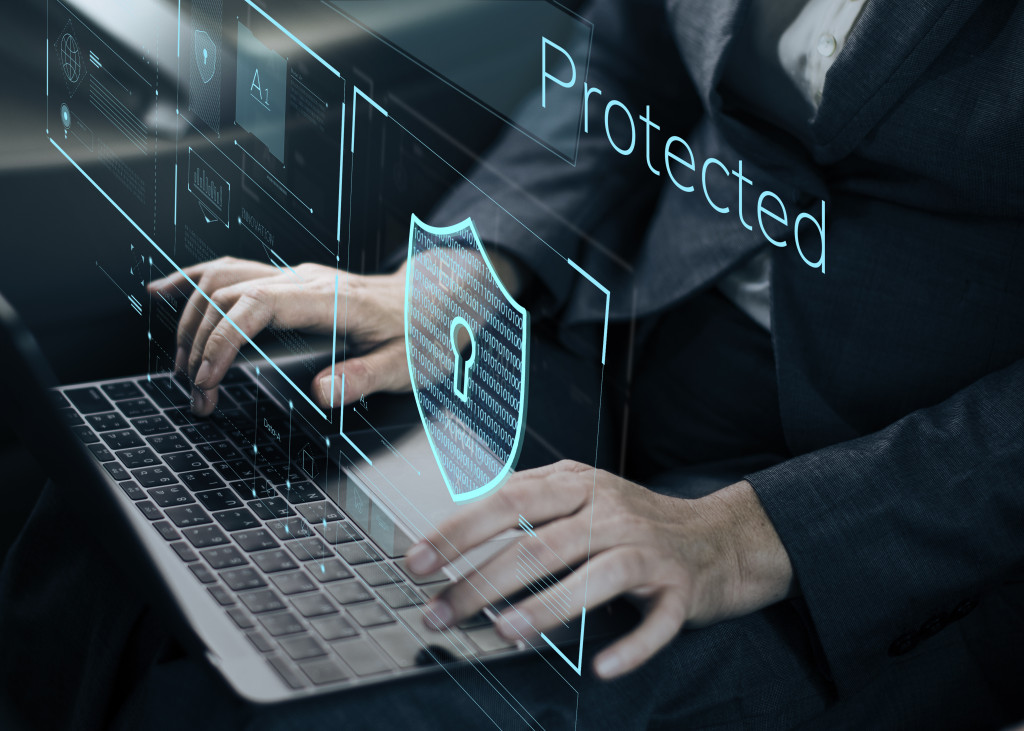The business world is more reliant on technology than ever before. To stay competitive, businesses must be able to utilize the latest and most excellent tools and software. Unfortunately, with great technology comes great responsibility—namely, keeping sensitive data safe from cybercriminals.
That’s where cybersecurity comes in. There are several ways to do this, and the methods you use will depend on the size and scope of your business, as well as the type of data you’re trying to protect. Here are five of the most popular methods companies are using to manage cybersecurity.
1. Two-Factor Authentication
One of the most effective ways to protect your data is also one of the simplest: two-factor authentication (2FA). 2019 was the year that Microsoft finally clued in and realized that 2FA actually works. In their report, they found that it blocks 99.9% of automated attacks.
Two-factor authentication relies on two pieces of information rather than one. The first piece is something they know, like a password. The second piece is something they have, like a physical token or a smartphone. It is an effective way to combat cybercrime because even if a hacker manages to obtain a user’s password, they won’t be able to log in without also having possession of the second factor. 2FA can help minimize the risk of data breaches and other malicious activity.
2. Firewalls
Firewalls are a type of security software that protects computers and networks by monitoring incoming traffic and blocking unauthorized access. They inspect all packets of data as they enter or leave an organization’s network, checking each one against a set of rules. If the system finds any packets that don’t meet these criteria, it can either drop them or even send out fake responses to trick hackers into thinking their attacks have succeeded when they’ve failed.
Companies can use this to manage cybersecurity, as it can prevent unauthorized access and protect against malware, viruses, worms, and other cyberattacks. Companies can use firewalls with other security measures, such as antivirus software and intrusion detection systems. Most organizations use a combination of these tools to help protect themselves from cyberattacks.
3. Encryption

Companies use encryption to protect sensitive data, such as credit card numbers and passwords. Encryption is a way to encode information so that only authorized users can access it. It’s also used to keep hackers from accessing the information on computers or other devices connected to the network.
For example, encryption can protect passwords and other sensitive information stored on a computer. When you log into your account, the password is encrypted, so hackers can’t get it. Companies today, such as Apple, use encryption to protect your data. When you turn on Touch ID, a unique fingerprint is created for each user on the device. This means that no one else can access your data if they get access to your phone. The fingerprint is also used for authentication when logging into accounts, making it harder for hackers to steal information from you.
4. Intrusion Detection Systems (IDS) / Intrusion Prevention Systems (IPS)
IDS monitors network traffic for suspicious activity and flags it for administrators so that they can investigate further. An IPS does all that, plus takes action to stop the suspicious activity before it does any damage—usually by blocking offending traffic at the firewall level. IDSes and IPSes are vital because they can help detect malicious activity before any damage is done—and prevent future attacks by blocking known threats from entering your network in the first place.
Companies can use IDS or IPS through data analytics tools that monitor network activity and provide alerts when they detect suspicious activity. Some IDSes are focused on just one type of threat. In contrast, others can monitor multiple types and have different modes for monitoring traffic in various environments (e.g., wired networks vs. wireless).
By taking advantage of this, companies can detect and track various threats, including viruses, spyware, account hijacking attempts, denial-of-service attacks, botnets, and more.
5. Internet Protocol (IP) Cameras
IP cameras are an excellent tool for monitoring network activity and detecting suspicious activity. They can be set up to stream video directly to a surveillance center or storage device, which allows employees to monitor live feeds of their locations at any time. This type of central station alarm monitoring is advantageous when you have many remote areas that need constant monitoring—it’s easy to access this data from anywhere in the world as long as an Internet connection exists.
IP cameras help prevent cyberattacks, as they can easily capture the face of an intruder and help law enforcement identify them. For example, if someone hacks into your network and attempts to steal data or destroy files, you can use an IP camera to determine who that person is quick. This is crucial for identifying a hacker and preventing future attacks.
In Closing
Cybersecurity is more critical than ever before—and businesses must take steps to protect themselves from attack. This is why it’s crucial to have a cybersecurity plan and know how your business can be protected.



